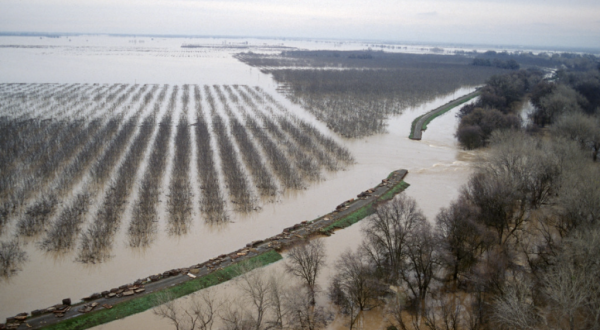Atmospheric River Storms Cause Further Flood Threats In California
March 16, 2023A new atmospheric river storm is expected to bring more flooding throughout the coast of California and the Central Valley, with further risk of overtopping creeks, rivers, and streams. This comes just days after another storm caused a levee rupture in the Pajaro River, flooding an entire town.
In Monterrey county, more than 8,500 residents were evacuated, including thousands of Latino farmworkers in a community known for its strawberry crops, after the Pajaro River swelled with runoff from last week’s storm.
Flood fighters are joining efforts to plug the levee breach hoping to prevent as much damage as possible from this week’s atmospheric river.
Governor Gavin Newsom has already extended a storm-related state of emergency to 40 counties, from the Bay Area in the north of the state, down to the Central Valley, Santa Barbara, and Ventura, as well as inland counties.
Even though experts anticipate less rain than last week, snowmelt at low elevations over already saturated soil poses a greater threat of flooding and mudslides.
In total, over 27,000 people have been put under evacuation orders as this most recent storm hits the state.
Salinas Valley
A couple of inches of extra rain in the Salinas Valley on the night of March 13-14 would have created much additional flooding on the region’s vegetable fields. But the quarter-inch received was not an issue as long as no more rain is received in the next 24 hours.
Chris Reade, vice president of the Salinas-based sales and marketing agency, Produce West, told FreshFruitPortal on March 14 that the Salinas River had dropped two feet in 24 hours. This winter’s rains in Salinas have brought the greatest flooding since 1998.
Given the historically-large snowpack accumulated in California mountains, “it sounds like we’re over the drought crisis. We’re 150 times better off than we were six months ago.”
While the flooding has certainly damaged fields this winter, Reade acknowledges that growers had prayed for rain. They got it.
Now the growers hope for a mild spring to gently melt the snowpack. If April brings temperatures of 85 or 90 degrees, melted snow will flood Salinas Valley rivers.
Growers and experts in the region are concerned as they wait to see what will be the effects of this weather front on production volumes for this season in a variety of crops including blueberries, strawberries, blackberries and grapes among others.
From FreshFruitPortal

